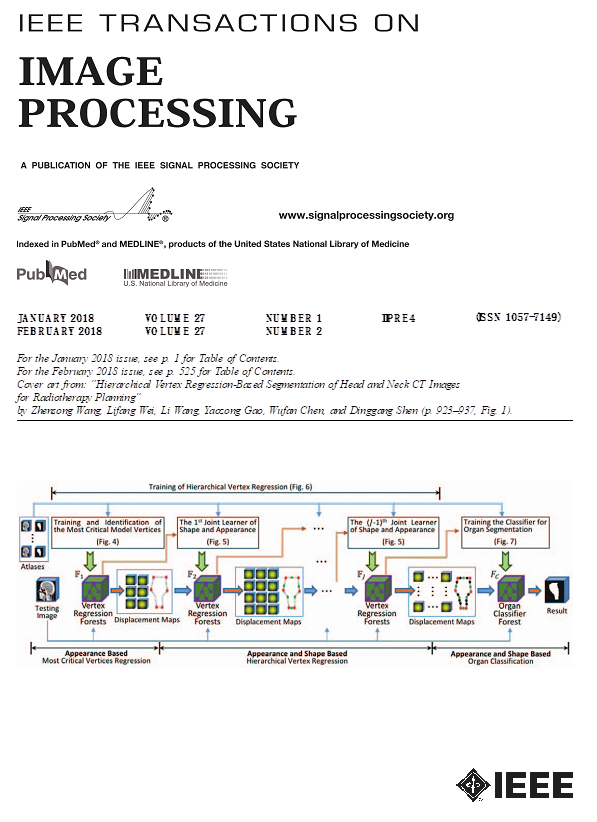迈向比伪参考更好的水下图像增强。
IF 13.7
1区 计算机科学
Q1 COMPUTER SCIENCE, ARTIFICIAL INTELLIGENCE
引用次数: 0
摘要
由于在现实世界中,退化的水下图像并不总是伴随着无失真的图像,现有的水下图像增强(UIE)方法大多是在由原始水下图像及其相应的伪参考标签组成的成对集合上学习的。虽然现有的UIE数据集手动选择最佳的模型生成结果作为伪参考,但这些伪参考标签并不总是表现出完美的视觉质量。因此,研究是否有可能突破使用不完美伪引用训练的UIE网络的性能瓶颈将是一个有趣的问题。基于这些事实,本文的重点是创新更高级的损失函数,而不是设计更复杂的网络架构。具体而言,提出了一种即插即用的混合性能超越损失(PSPL)方法,该方法由质量分数比较损失(QSCL)和场景深度感知非配对对比损失(DUCL)组成,用于指导UIE网络的训练。在功能上,QSCL旨在通过从图像级和区域级构建图像质量评分比较损失,引导UIE网络生成视觉质量优于伪参考的增强结果。然而,对于那些退化严重的偏远地区,仅使用QSCL并不能保证获得理想的结果。因此,我们还设计了一个定制的DUCL,从场景深度的角度来处理这一具有挑战性的问题,即DUCL鼓励增强结果的远端区域更靠近高质量的近端区域(拉),远离低质量的远端区域(推)。大量的实验结果表明,即使在极其简单和轻量级的UIE网络中,使用PSPL也优于最先进的技术。源代码将在https://github.com/lewis081/PSPL上发布。本文章由计算机程序翻译,如有差异,请以英文原文为准。
Toward Better Than Pseudo-Reference in Underwater Image Enhancement.
Since degraded underwater images are not always accompanied with distortion-free counterparts in real-world situations, existing underwater image enhancement (UIE) methods are mostly learned on a paired set consisting of raw underwater images and their corresponding pseudo-reference labels. Although the existing UIE datasets manually select the best model-generated results as pseudo-references, such pseudo-reference labels do not always exhibit perfect visual quality. Therefore, it would be interesting to investigate whether it is possible to break through the performance bottleneck of UIE networks trained with imperfect pseudo-references. Motivated by these facts, this paper focuses on innovating more advanced loss functions rather than designing more complex network architectures. Specifically, a plug-and-play hybrid Performance SurPassing Loss (PSPL), consisting of a Quality Score Comparison Loss (QSCL) and a scene Depth-aware Unpaired Contrastive Loss (DUCL), is formulated to guide the training of UIE network. Functionally, QSCL aims to guide the UIE network to generate enhanced results with better visual quality than pseudo-references by constructing image quality score comparison losses from both image-level and region-level. Nevertheless, only using QSCL cannot guarantee obtaining desired results for those severely degraded distant regions. Therefore, we also design a tailored DUCL to handle this challenging issue from the scene depth perspective, i.e., DUCL encourages the distant regions of the enhanced results to be closer to the high-quality nearby regions (pull) and far away from the low-quality distant regions (push) of the pseudo-references. Extensive experimental results demonstrate the advantage of using PSPL over the state-of-the-arts even with an extremely simple and lightweight UIE network. The source code will be released at https://github.com/lewis081/PSPL.
求助全文
通过发布文献求助,成功后即可免费获取论文全文。
去求助
来源期刊

IEEE Transactions on Image Processing
工程技术-工程:电子与电气
CiteScore
20.90
自引率
6.60%
发文量
774
审稿时长
7.6 months
期刊介绍:
The IEEE Transactions on Image Processing delves into groundbreaking theories, algorithms, and structures concerning the generation, acquisition, manipulation, transmission, scrutiny, and presentation of images, video, and multidimensional signals across diverse applications. Topics span mathematical, statistical, and perceptual aspects, encompassing modeling, representation, formation, coding, filtering, enhancement, restoration, rendering, halftoning, search, and analysis of images, video, and multidimensional signals. Pertinent applications range from image and video communications to electronic imaging, biomedical imaging, image and video systems, and remote sensing.
 求助内容:
求助内容: 应助结果提醒方式:
应助结果提醒方式:


